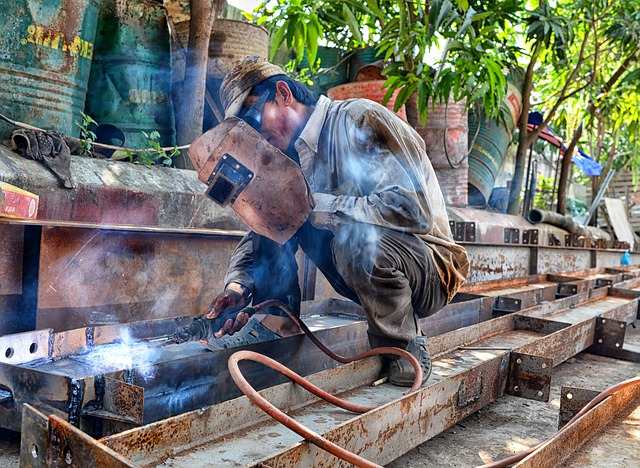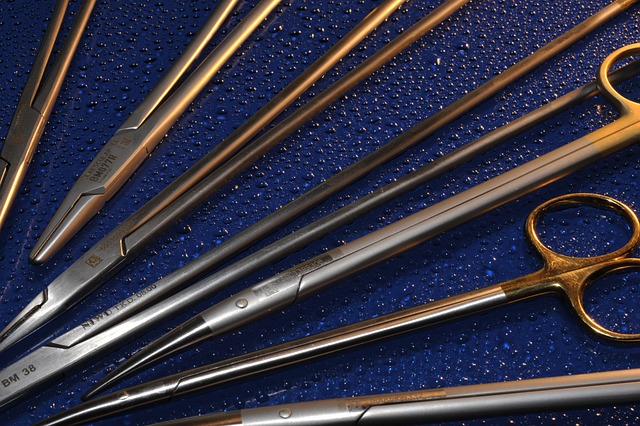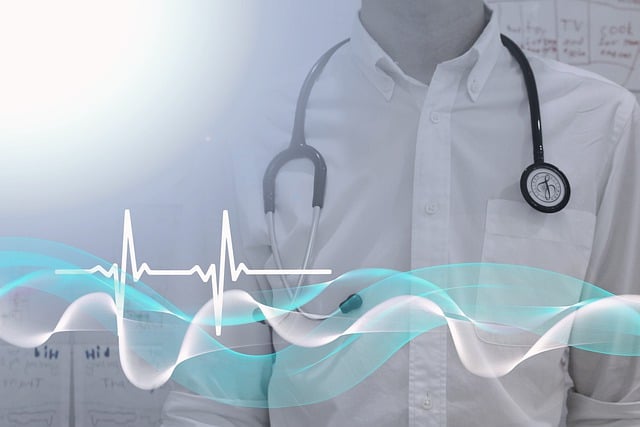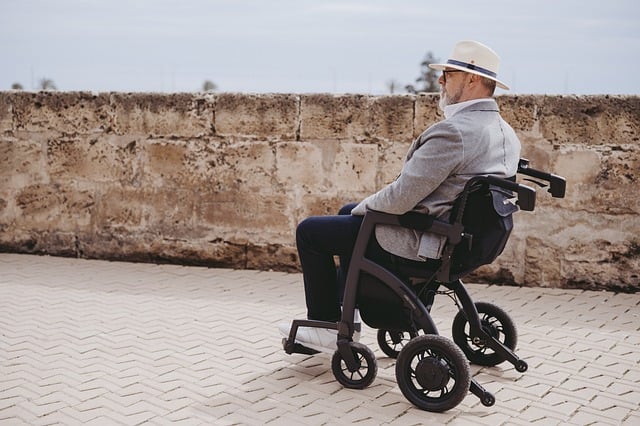Translation services for Medical Device Manuals UK are critical due to the country's rich linguistic diversity and stringent regulatory standards. These services ensure that medical device manuals are not only technically accurate but also culturally and contextually appropriate for the UK's diverse populations, including Scottish, Welsh, and Northern Irish communities. Expert translators must be well-versed in both the source and target languages, possess deep knowledge of medical terminology, and stay updated with the latest regulatory compliance requirements, such as those set by the Medicines and Healthcare products Regulatory Agency (MHRA). The integration of AI's advanced translation technology with human oversight is essential to deliver high-quality translations that meet industry standards, maintain patient safety, and facilitate market entry for medical devices in the UK post-Brexit. This approach not only aligns with the EU's Medical Device Regulation (MDR) but also adapts to the UK's specific healthcare environment and practices. The successful translation of medical device manuals supports medical professionals and patients, ensuring clear instructions and safe usage of advanced imaging technology and other medical devices within the NHS and beyond.
Navigating the complexities of medical device regulation, particularly in markets with stringent standards like the United Kingdom, necessitates impeccable translation accuracy. This article delves into the precision and reliability of translations for medical device manuals intended for the UK market, exploring the demand, regulatory impacts, and the dichotomy between automated and human translations. We will examine the critical role of professional translation services in adhering to UK standards, address cultural nuances that can affect interpretation, and highlight key challenges within the sector. With a focus on compliance with MHRA guidelines and showcasing successful case studies, this piece aims to shed light on maintaining high standards in medical device manual translations for the UK’s diverse patient population.
- Understanding the Demand for Medical Device Manual Translations in the UK
- Overview of Medical Device Regulation (MDR) and its Impact on Translation Accuracy
- The Role of Professional Translation Services in Complying with UK Standards
- Assessing the Precision of Automated vs. Human Translation for Medical Devices
- Cultural Nuances and Their Importance in Translating Medical Device Manuals
- Key Challenges Faced by Translation Services in the Medical Sector
- Ensuring Compliance with MHRA Guidelines through Effective Translation Strategies
- Case Studies: Successful Translations of Medical Device Manuals for the UK Market
Understanding the Demand for Medical Device Manual Translations in the UK

The United Kingdom’s diverse population and its commitment to providing patient-centric healthcare have created a significant demand for medical device manuals that are accurately translated into various languages, including but not limited to British Sign Language and other dialects spoken within the UK. As medical devices become increasingly sophisticated and their use widespread across different demographics, it is imperative that users can access and understand instructions and safety information in a language they are fluent in. This is where translation services for Medical Device Manuals UK come into play, offering precise and reliable translations to bridge communication gaps between manufacturers and end-users. The accuracy of these translations is paramount, as they directly impact the safe operation of medical devices and the well-being of patients. In a market that is both stringently regulated and rapidly evolving, the reliability of translation services is not just a value-added service but a necessity for compliance with legal standards and ethical practices in healthcare. Therefore, providers of such translation services must adhere to the highest levels of accuracy and cultural sensitivity to ensure that all users, regardless of language or background, can effectively use medical devices safely and efficiently.
Overview of Medical Device Regulation (MDR) and its Impact on Translation Accuracy

The Medical Device Regulation (MDR) 2017/745, which came into effect on May 26, 2017, has significantly impacted the medical device industry, particularly in the UK market. This comprehensive regulatory framework ensures the safety and performance of medical devices before they reach patients. A key aspect of compliance with MDR is providing accurate, clear, and user-friendly information to healthcare professionals and patients through medical device manuals. Translation services for Medical Device Manuals UK must adhere to the high standards set forth by the MDR to ensure that all translations are precise and convey the necessary information without ambiguity or error. The accuracy of these translations is critical, as they facilitate the safe use of medical devices across multilingual populations within the UK.
The translation process for medical device manuals in the UK must account for the MDR’s stringent requirements, which include a focus on patient safety and post-market clinical follow-up. The translations must accurately reflect the original content, preserving not only the technical information but also the nuances of language that are essential for safe medical device use. High-quality translation services for Medical Device Manuals UK are now more than just a communication bridge; they are an integral part of a product’s compliance strategy. As such, translators specializing in this field must be well-versed not only in the technical jargon of medical devices but also in the regulatory language of MDR to ensure that every translated manual meets the necessary legal and safety standards.
The Role of Professional Translation Services in Complying with UK Standards

When it comes to ensuring that medical device manuals are accurately translated for the UK market, professional translation services play a pivotal role. The accuracy of translations is not just about conveying information from one language to another; it encompasses understanding and adhering to specific terminology, regulatory requirements, and standards unique to the UK healthcare sector. These translation services are adept at navigating the complex landscape of medical device regulations, such as those outlined by the Medicines and Healthcare products Regulatory Agency (MHRA), ensuring that manuals meet both linguistic and compliance expectations. This is crucial because accurate translations help maintain patient safety, a paramount concern in the medical field.
Moreover, the translation services for Medical Device Manuals UK are equipped with expert translators who are not only proficient in multiple languages but also trained in the intricacies of medical device terminology. They are familiar with the nuances that can arise from cultural differences and technical jargon, which could otherwise lead to misinterpretation or misuse of devices. By leveraging their specialized knowledge, these services bridge the gap between manufacturers and end-users, ensuring that all users in the UK, regardless of language barriers, receive clear and precise instructions for safe and effective use of medical devices. This level of precision is indispensable for the successful entry and operation of medical devices in the UK market.
Assessing the Precision of Automated vs. Human Translation for Medical Devices

In the critical domain of medical device manuals, precision in translation is paramount to ensure patient safety and regulatory compliance. The UK market, with its unique linguistic nuances and regulatory requirements, necessitates translations that are both accurate and accessible. Here, the debate between automated and human translation services for Medical Device Manuals UK takes center stage. Human translators bring a level of cultural sensitivity and contextual understanding to their work, which is crucial when conveying safety information and instructions for use. Their expertise allows them to navigate the complexities of medical jargon and the specificities of device functions, ensuring that the translated text aligns with the original content’s intent and meaning.
However, the advent of advanced artificial intelligence (AI) has introduced a new dimension to the translation landscape. Automated translation services have made significant strides, offering speed and scalability that can be advantageous for large-scale or frequent translations. For Medical Device Manuals UK, these services can provide a first pass at translation that is surprisingly accurate, often catching the gist of technical descriptions and terminology. Yet, the nuances of language, especially in medical contexts where precision is critical, can still present challenges to AI. Human oversight remains essential to refine automated translations, ensuring they meet the high standards required by the medical device industry and regulatory bodies such as the Medicines and Healthcare products Regulatory Agency (MHRA). The most effective approach likely involves a collaborative effort between human expertise and AI capabilities, leveraging each for their respective strengths to achieve the highest level of accuracy and reliability in translating medical device manuals for the UK market.
Cultural Nuances and Their Importance in Translating Medical Device Manuals

When it comes to translating medical device manuals for the UK market, cultural nuances play a pivotal role in ensuring accuracy and effectiveness of communication. The UK’s diverse linguistic landscape, influenced by both historical British English and contemporary multiculturalism, necessitates a deep understanding of context-specific terminology and expressions. Translation services for Medical Device Manuals UK must navigate the fine line between standardised medical terms and colloquialisms that resonate with the local population. This is crucial as medical devices are often used in sensitive and critical situations where misinterpretation or misunderstanding can lead to adverse outcomes.
The importance of culturally nuanced translations cannot be overstated, especially considering the UK’s position within the European Medical Device Regulation (MDR) framework. This regulation demands that medical device manuals are not only linguistically accurate but also contextually appropriate for the end-users. Translation services for Medical Device Manuals UK must, therefore, employ expert translators with a solid grasp of both the source and target languages, as well as the cultural nuances inherent in medical terminology. These professionals are trained to adapt language to reflect local practices, regulations, and expectations, thereby ensuring that users receive clear, precise, and safe guidance on the use of medical devices. This level of precision is indispensable for maintaining patient safety and regulatory compliance within the UK market.
Key Challenges Faced by Translation Services in the Medical Sector

The translation of medical device manuals in the UK market presents a unique set of challenges that go beyond mere linguistic conversion. Medical device manufacturers, particularly those providing translation services for medical device manuals UK, must navigate complex regulatory environments and ensure precise communication to maintain patient safety and compliance with regional standards. One significant hurdle is the need for terminological accuracy; medical terminology is highly specialized, and even a small error can have severe consequences. Translation services for Medical Device Manuals UK must employ translators with deep expertise in both the source and target languages, as well as a thorough understanding of medical terminology. These professionals must stay abreast of the latest developments and approved nomenclature within their field to provide reliable translations that are both legally compliant and medically accurate.
Another challenge is the variability in regulations across different regions. The UK, post-Brexit, has its own set of medical device regulations, distinct from those of the European Union. Translation services for Medical Device Manuals UK must account for these differences to ensure that all translations adhere to local legal and safety standards. Additionally, the context in which medical devices are used can differ significantly between countries, necessitating a deep understanding of clinical practices within the UK. This contextual awareness is crucial for accurate translation, as it ensures that instructions and warnings are not only correctly translated but also relevant to the end-user’s situation. The stakes are high: any misstep in translation could lead to misuse or malfunction of a device, potentially compromising patient safety. As such, the quality assurance processes for translation services for Medical Device Manuals UK must be robust and meticulous to uphold the integrity and reliability of the medical devices’ use across the country.
Ensuring Compliance with MHRA Guidelines through Effective Translation Strategies

When it comes to medical device manuals in the UK, compliance with the guidelines set forth by the Medicines and Healthcare products Regulatory Agency (MHRA) is paramount. Effective translation services for Medical Device Manuals UK play a critical role in ensuring that these documents meet the stringent regulatory requirements. The translation process must not only accurately convey technical information but also adhere to linguistic nuances and cultural contexts, which are essential for user safety and regulatory compliance. To achieve this, translators specializing in medical device manuals must be well-versed in both the source and target languages as well as the relevant medical terminology. They must also be familiar with the MHRA guidelines to ensure that all translated content aligns with the UK’s standards for medical devices. Translation services that excel in this domain employ a combination of skilled human translators and advanced translation technologies, such as Computer-Aided Translation (CAT) tools, to maintain consistency, accuracy, and regulatory compliance across all translated manuals. This dual approach allows for the efficient handling of large volumes of content while preserving the integrity of the original text. Moreover, these services often include a quality assurance process, where translations are reviewed by subject matter experts to ensure that all medical device manuals for the UK market are not only linguistically correct but also technically precise, thereby safeguarding patient safety and enhancing the reliability of medical devices in the UK healthcare system.
Case Studies: Successful Translations of Medical Device Manuals for the UK Market

Within the UK market, the accuracy and cultural relevance of medical device manual translations are paramount, given the stringent regulatory standards and the diverse linguistic landscape. A prime example of successful translation services for Medical Device Manuals in the UK is a leading medical device company that expanded its reach to British consumers. The company faced the challenge of making their manuals comprehensible to a wide range of English speakers across different regions within the UK, including Scotland, Wales, and Northern Ireland. By employing a specialized team proficient in UK English nuances and local regulations, the translations were meticulously tailored to the regional variations in language, ensuring clarity and compliance with the Medicines and Healthcare products Regulatory Agency (MHRA) guidelines. This attention to detail not only facilitated a seamless user experience but also played a pivotal role in obtaining the necessary certifications for market entry.
Another case study involves a multinational corporation that specializes in advanced imaging technology. The company’s manuals, originally in Japanese, required precise and accurate translations to be utilized by UK medical professionals. The translation services provider engaged was not only adept at technical language but also had a deep understanding of the cultural context and medical terminology specific to the UK. This collaboration resulted in translations that were both scientifically accurate and culturally appropriate, bridging the gap between cutting-edge technology and its practical application within the NHS. The success of these translations underscores the importance of choosing translation services for Medical Device Manuals UK that offer expertise in both the linguistic and regulatory aspects of medical document localization.
In conclusion, the accuracy of translations for medical device manuals in the UK market is not a matter of chance but a critical aspect ensuring patient safety and regulatory compliance. The UK’s stringent Medical Device Regulation (MDR) necessitates precise translation services for medical device manuals UK to convey manufacturer instructions effectively without compromising on clarity or cultural relevance. Professionally rendered translations stand out against automated alternatives, offering nuanced interpretations that resonate with the UK audience while adhering to the MHRA guidelines. The case studies presented underscore the efficacy of expert translation services in this specialised field, highlighting their role in facilitating seamless market entry and ongoing compliance for medical device manufacturers. For stakeholders within the medical device industry, prioritising top-tier translation services for medical device manuals UK is not merely a best practice—it’s an indispensable component of their commitment to quality care and safety.
